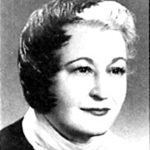 Model K. Roy
Model K. Roy

The adaptive model of K. Roy is based on the presence of a certain range of possibilities in which a person adapts to unusual states independently and with outside help. The possibilities of the body in this model:
- physiological;
- psychological.
Each person has a unique range of comfortable adaptation (both physiological and psychological). 's sisterly adaptation model defines the factors influencing the size of the adaptation range as stimuli.
Types of irritants:
- focal - surround a person;
- situational - arise under the circumstances of the provision of nursing care, affect focal;
- residual - accumulated life experience, patterns of behavior.
The combination of all types of stimuli affects the level of possible adaptation.
Ways of adaptation offered by the model of Calista Roy in nursing:
- Physiological- depends on the ability of a person to respond to physical stimuli (the effect of temperature, humidity, diet, etc.).
- Self-concept - through the patient's desire to understand and accept his psychological and bodily image. The method helps to accept changes in bodily and psychological "I". Efficiency is high with changing operations - amputations, ectomy, stoma.
- Role-function - the role of the patient in society - in the family, in the team. When a disease occurs, an active person is forced to accept the role of a passive patient. while adaptive capacity may be low.
- Interdependence - a person's desire to build relationships, which can be temporarily disrupted due to illness. When communicating between a nurse and a patient, familiarity, neglect, pressure are unacceptable. After all, the patient is in full or partial dependence on medical workers. You should remember the threshold of adaptation and not lower it with your wrong actions.
Applying the Calista Roy Model to the Nursing Process
1. The patient is assessed on their behavior in light of changes in each of the 4 modes of adaptation. The nurse finds out if the balance of adaptation is disturbed and finds out the reasons.
2. The source of the patient's problems is the lack or excess of funds and opportunities for using a certain method of adaptation.
3. The goal of care is to identify stimuli that cause behavioral disturbances. The nurse, together with the patient, determines plans and ways to achieve them.
4. Orientation of care - the establishment of effective ways of coping in cases where the patient's behavior is alarming. The nurse determines the level of influence of a particular stimulus on the patient.
5. The role of the nurse is to promote the adaptation of a person both during the period of illness and in a healthy state.
6. Methods of intervention - unobtrusive conversations with the patient during care and manipulation. The nurse should direct the patient's efforts to expand the boundaries of adaptation. This is the key to a speedy recovery.
7. The nurse evaluates the result Attention should be paid to expanding the range of patient adaptation and reinforce the result with positive statements and praise without familiarity.




